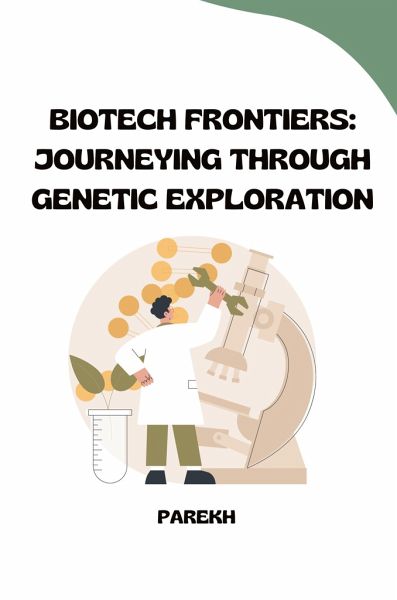
Biotech Frontiers: Journeying Through Genetic Exploration
Versandkostenfrei!
Versandfertig in 6-10 Tagen
26,10 €
inkl. MwSt.

PAYBACK Punkte
0 °P sammeln!
Genetics, the science of heredity, has revolutionized our understanding of life. From Gregor Mendel's groundbreaking experiments with peas to the discovery of the DNA structure in the 20th century, genetic breakthroughs have fundamentally altered our knowledge of how organisms function at the molecular level. In this essay, we explore some of the most significant historical breakthroughs in genetics and illuminate their profound impact on our understanding of biology and medicine.Mendel's Pea Experiments: The Birth of Modern GeneticsIn the 19th century, Gregor Mendel, an Augustinian monk and n...
Genetics, the science of heredity, has revolutionized our understanding of life. From Gregor Mendel's groundbreaking experiments with peas to the discovery of the DNA structure in the 20th century, genetic breakthroughs have fundamentally altered our knowledge of how organisms function at the molecular level. In this essay, we explore some of the most significant historical breakthroughs in genetics and illuminate their profound impact on our understanding of biology and medicine.Mendel's Pea Experiments: The Birth of Modern GeneticsIn the 19th century, Gregor Mendel, an Augustinian monk and naturalist, laid the foundation for modern genetics through his experiments with peas. Mendel observed that certain traits, such as the color of flower petals or the shape of seeds, were passed down from one generation to the next. Through careful analysis of his results, he formulated the Mendelian laws of inheritance, which state that genes occur in dominant and recessive alleles and that these alleles are inherited independently. Mendel's work, initially largely overlooked, is now considered one of the most important milestones in the history of science.The Discovery of DNA Structure: The Molecule of LifeIn the 20th century, scientists succeeded in deciphering the structure of the deoxyribonucleic acid (DNA) molecule, which holds the genetic information of all living organisms. In 1953, James Watson and Francis Crick, supported by Maurice Wilkins and Rosalind Franklin, described the double helix structure of DNA, composed of two intertwined strands. This discovery marked a turning point in biology and enabled scientists to understand the workings of genes and the mechanisms of heredity at the molecular level.














